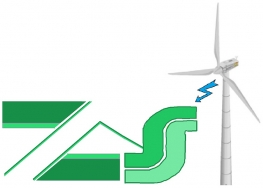
The European ZAS Project aimed to develop electrically rechargeable zinc-air secondary batteries. Despite the fact that the primary system for this technology is commercialised for low-voltage applications worldwide, its rechargeable system suffers from a short useful life, mainly due to corrosion and low electrode reversibility. Hence, one of the principal objectives of the ZAS project was to identify processable materials through profitable, high-performance theoretical and experimental models (including next-generation electrolytes) for ZABs.
The consortium, coordinated by SINTEF with CIDETEC Energy Storage in Technological Management, was composed of technological companies and agents from five European countries – ES, NO, DE, BU, DK – covering the entire value chain. This consortium managed to set up a multi-scale battery modelling platform that covers steps ranging from the design of materials on the atomic/molecular level up to module simulations under real operating conditions.
This platform made it possible to identify the factors possibly responsible for limited electrode recycling capacity on the level of cells as well as the optimum design for these and for the cells to inhibit such factors, thus favouring the durability of rechargeable zinc-air batteries.
Throughout the three years of the project, the consortium, which availed of € 6.6M in funding from the European Commission under the H2020 Programme, published 10 articles in scientific magazines, conducted 1 qualifying test, produced 4 doctoral and 2 master theses, submitted 4 patents, and contributed 15 oral presentations and 20 posters to different international conferences. Moreover, it organised two international workshops on the subject.
During the project, CIDETEC Energy Storage, apart from serving as technical coordinator, developed the advanced electrolytes for the new rechargeable zinc-air battery prototypes, showing over 2000 hours of operation. The results of these batteries were used to simulate a hybrid energy storage system providing 'load-shifting' services (i.e., storing energy during high-generation periods and distributing it to the grid in low-generation periods) to a 500-kW solar plant. The cost of this system was reduced by 50% by integrating high-energy-density zinc-air technology with a high-power-density technology. The simulations showed that the system based on the ZAS project technology enabled energy storage (100 kWh) and supply for periods of up to 10 hours.